Bird Wing Clipping Guide for Pet Owners

Written by
John Williams
Reviewed by
Prof. David Walsh, Ph.D.Bird wing clipping is temporary and requires regular maintenance as feathers regrow.
Bird-proofing your home provides safer alternatives to wing clipping for escape prevention.
Clipping risks include obesity, muscle atrophy, and psychological stress in pet birds.
Always consult an avian veterinarian before clipping to avoid blood feather injuries.
Species-specific care requires adjusted exercise and nutrition for clipped versus flighted birds.
Proper clipping technique maintains symmetry: trim identical primary feathers on both wings.
Article Navigation
Bird wing clipping is the practice of cutting a bird's primary flight feathers to limit its ability to fly. These long feathers at the ends of the wings are used for lift and control. Bird owners use wing clipping to avoid escapes and injuries. It requires considerable skill. If the incorrect wing feather is cut, the bird will become unbalanced and may suffer pain.
There is an ethical argument about clipping. Some believe it protects birds from the dangers of ceiling fans or open windows. Others believe that restricting flights for the sake of safety will prevent natural behavior and cause stress. You must weigh the safety of the bird against freedom. This article presents balanced facts for you to consider about primary feathers and welfare.
We provide clear recommendations, but do not wish to promote any agenda. Such topics as twine-proofing homes and recall training will also be covered. You will be made aware of both sides of the ethical controversy. You need to make your own decisions based on the species and environment of your bird. The welfare of your pet is the primary consideration.
Understanding Bird Flight
Flying is an instinct in birds. Exercise is gained during flying, and escaping from enemies is made easy. These birds, of course, cannot fly and, in consequence, miss much of the necessary mental stimulation. They also miss a great amount of essential physical activity. The overall effect on health and happiness is bad.
Primary feathers create lift at the end of the wings. The secondary feathers, which are nearer to the body, determine the direction. They both form the wing surface. If the feathers are clipped, the change in the flow of air over the wing reduces flight control and gliding ability.
Recognizing the importance of clipping necessitates an understanding of flight mechanics. The principles of aerodynamics demonstrate how the lack of symmetry in wing trims disrupts balance and leads to flight instability. If birds are unevenly clipped, they may crash and have hard landings, which over-stress their muscles and joints.
Limiting flight affects more than just the flight. Birds' flight is used to express natural behaviors, such as foraging. If birds cannot do this, they may develop stereotyped behaviors associated with stress. Feather picking is often a result of flight restriction. Consider other options before you restrict this necessary ability for the bird.
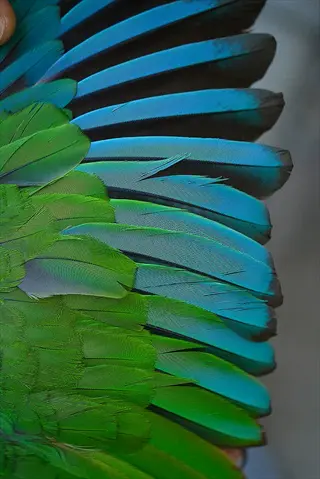
Primary Feathers
- Location: Positioned on the outermost wing section extending beyond the wrist joint where they form the critical flight surface necessary for aerial movement
- Function: Generate essential thrust during flapping motions while providing upward lift capabilities that enable birds to ascend against gravity during flight
- Clipping Impact: Trimming reduces overall lift generation significantly limiting altitude gain while still allowing controlled descent trajectories when properly performed
- Regrowth: Molt cycle-dependent process where small species regrow feathers within 4-6 weeks while larger birds require 9-12 months for full regeneration
- Vulnerability: Emerging blood feathers lack protective keratin sheaths making them prone to dangerous bleeding if damaged during growth phases requiring careful monitoring
- Count: Typically 9-10 asymmetrically arranged feathers per wing in most parrot species necessitating balanced trimming approaches to maintain flight stability
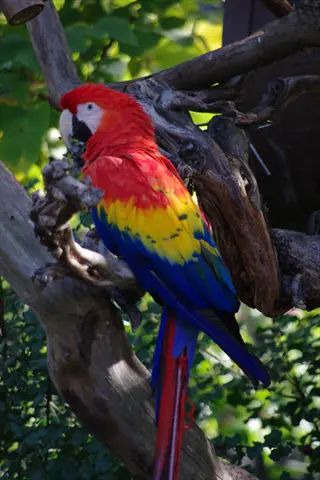
Secondary Feathers
- Location: Located on the inner wing section near the body where they overlap systematically to create structural integrity throughout the flight surface
- Function: Provide crucial stability during gliding maneuvers while controlling airflow patterns across the wing's aerodynamic profile for efficient movement
- Clipping Impact: Should never be trimmed as they enable safe landing capabilities and their removal often causes uncontrolled crash-descent accidents
- Regrowth: Experience slower regeneration cycles than primary feathers and play vital roles in protecting underlying blood feather development during molting
- Aerodynamics: Create precisely curved surfaces that generate optimal lift efficiency across varying flight speeds through specialized barbule arrangements
- Protection: Form protective layers that shield delicate emerging blood feathers by covering vulnerable shaft bases during critical growth phases
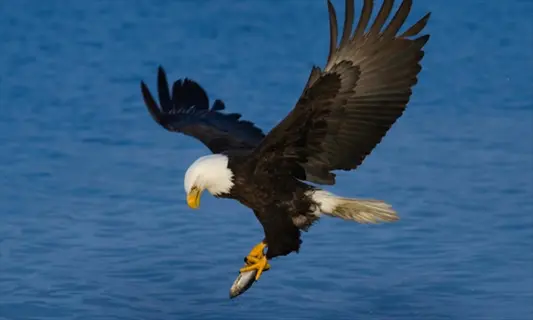
Coverts
- Location: Layered feathers covering the bases of both primary and secondary feathers along the entire wing surface creating smooth contours
- Function: Streamline airflow over wings while providing essential protection for underlying structures against environmental damage during flight
- Clipping Impact: Accidental trimming causes significant feather irritation and compromises crucial thermal insulation properties needed for temperature regulation
- Regrowth: Synchronized with main flight feather replacement cycles where damage increases vulnerability throughout molting periods requiring careful inspection
- Waterproofing: Contain specialized preen oil distribution points that are critical for maintaining feather water resistance during wet conditions
- Sensitivity: Feature nerve endings near follicles that detect subtle airflow changes enabling mid-flight adjustments for optimal aerodynamic performance
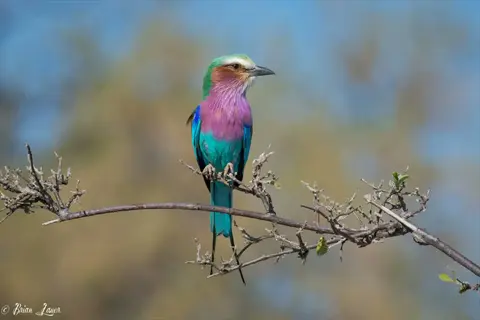
Alula Feathers
- Location: Small group of feathers attached to the thumb-like digit positioned at the wing's leading edge near the shoulder joint
- Function: Act as sophisticated airflow disruptors preventing dangerous stalls during slow flight maneuvers or steep landing approaches
- Clipping Impact: Should never be trimmed since loss causes catastrophic loss of low-speed control leading to dangerous landing crashes
- Regrowth: Require precise alignment during regeneration as improper growth permanently impairs low-velocity maneuverability capabilities in birds
- Mechanics: Deploy automatically during descent sequences similar to aircraft slats maintaining essential lift coefficients when slowing down
- Species Variation: More developed in birds requiring precise landings such as forest-dwelling species navigating complex branch environments
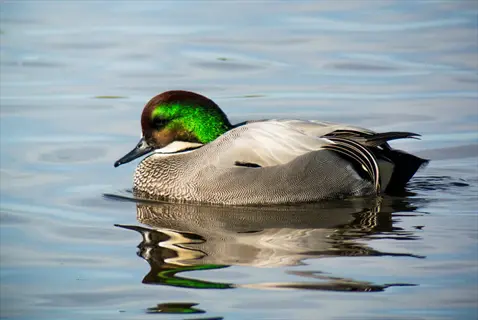
Tertial Feathers
- Location: Innermost flight feathers connecting secondary feathers to the bird's body at the crucial shoulder joint articulation point
- Function: Anchor powerful wing musculature while providing structural reinforcement during intensive flapping motions required for takeoff
- Clipping Impact: Trimming causes severe joint instability and significantly reduces power transmission efficiency during flight initiation
- Regrowth: Feature slow regeneration cycles where damage leads to permanent reduction in overall flight stamina and endurance
- Attachment: Contain reinforced follicles directly connected to supracoracoideus muscles delivering essential upstroke power generation
- Thermoregulation: Include dense vascular networks that dissipate excess heat efficiently during sustained flight exertion periods
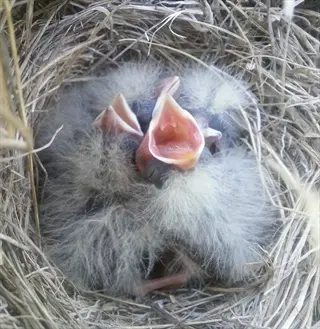
Down Feathers
- Location: Fluffy insulating underlayer situated beneath contour feathers across the entire body including critical wing base areas
- Function: Provide essential thermal insulation by trapping insulating air pockets directly against the skin in cold environments
- Clipping Impact: Indirect damage during trimming procedures reduces cold tolerance and impairs energy conservation abilities significantly
- Regrowth: Undergo continuous replacement cycles that are critical for maintaining core body temperature homeostasis during seasonal changes
- Structure: Lack interlocking barbules creating specialized air-trapping loft structures determining overall insulation efficiency ratings
- Water Resistance: Require regular preen oil treatments to maintain optimal loft and buoyancy characteristics during aquatic activities
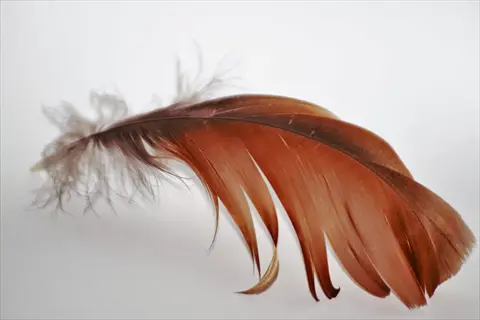
Contour Feathers
- Location: Outer visible feathers defining overall body shape including specialized wing and tail silhouette profile formations
- Function: Reduce aerodynamic drag significantly while protecting underlying structures from physical environmental damage sources
- Clipping Impact: Accidental nicking creates disruptive turbulence points increasing energy expenditure requirements during extended flights
- Regrowth: Patterned replacement processes that are crucial for maintaining species-specific flight performance characteristics over time
- Aerodynamics: Feature interlocking barbule systems creating smooth surfaces that minimize boundary layer separation during flight
- Camouflage: Incorporate specialized pigmentation and patterns providing visual concealment advantages against predators in natural habitats
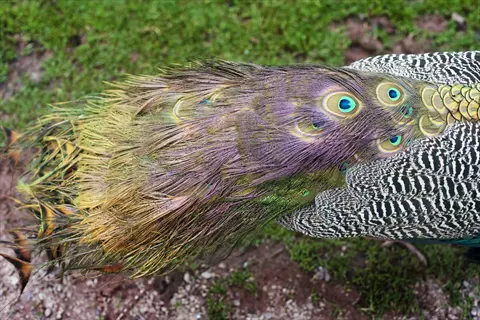
Tail Feathers
- Location: Rectrices extending from pygostyle bone forming rear aerodynamic control surfaces essential for flight stabilization
- Function: Provide precise steering control braking drag application and pitch adjustment during complex aerial maneuvers
- Clipping Impact: Trimming reduces landing accuracy and turning precision significantly increasing crash likelihood during descents
- Regrowth: Asymmetric replacement patterns directly affect flight stability requiring balanced symmetrical trimming approaches always
- Mechanics: Function as rudders during turns while serving as airbrakes when deliberately fanned during descent approaches
- Balance: Provide critical counterweight functionality maintaining optimal center of gravity alignment during takeoff sequences
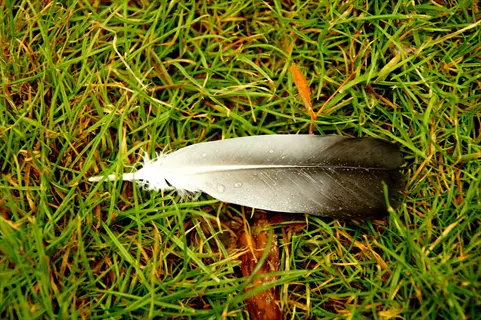
Blood Feathers
- Location: Developing replacement feathers emerging across wing surfaces throughout natural molting cycles in all bird species
- Function: Regenerate essential flight capabilities by systematically replacing worn feathers through vascularized growth phases
- Clipping Impact: Accidental cutting causes severe hemorrhage requiring immediate emergency clotting interventions to prevent fatalities
- Regrowth: Protected by specialized keratin sheaths during critical 2-3 week growth phases before blood supply naturally recedes
- Identification: Appear as dark-shafted pins with waxy coatings indicating active blood supply presence needing careful avoidance
- Vulnerability: Highest risk periods occur consistently 1-3 weeks after molting initiation across all avian species types
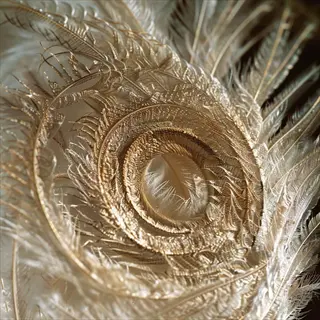
Afterfeathers
- Location: Auxiliary fluffy structures attached directly to main feather shafts near calamus base connection points throughout wings
- Function: Enhance thermal insulation properties substantially by increasing trapped air volume around primary feather base regions
- Clipping Impact: Damage reduces thermal efficiency considerably increasing metabolic energy demands during cold temperature exposure
- Regrowth: Develop simultaneously with main feather structures requiring completely intact follicles for proper formation processes
- Structure: Lack interlocking barbicels creating open filamentous networks specifically designed for maximum heat retention efficiency
- Species Variation: More prominent in temperate-climate birds requiring superior cold weather insulation capabilities for survival
Alternatives to Wing Clipping
Bird-proofing your house may prove a better choice than wing clipping because it gives greater safety. Use screens on the windows and remove ceiling fans and other objects that pose a threat to the bird's safety. This method protects the bird while allowing it to fly freely. It meets its escape requirements without hampering its instincts. You are furnishing a safe environment for its natural proclivities.
A harness for birds needs to fit properly for safety. Measure your bird's chest with a soft tape measure. Begin by having short indoor sessions before going out. For birds of a small size, use a very light type. For the larger parrots, the stitching should be reinforced. Make it an absolute rule to check all buckles every time before using.
Recall Training produces consistent responses through the use of positive reinforcement. Begin the training in small areas using high-quality foods such as pine nuts. During training, maintaining a medium consistency in the whistle command is essential. Gradually increase the distance and lower the level of distractions. Provide generous rewards for immediate returns. This method produces voluntary returns and not returns by force.
These options work in sync, allowing for total safety. Bird-proofing helps prevent accidents, and harnesses allow for supervised outside time. Recall training creates trust and control. I have seen birds do well in this type of environment. This approach takes their nature into account while ensuring that they are safe.
Window and Door Safety
- Install screens on all windows with 1/2 inch mesh to prevent escapes
- Use double-door entry systems to create airlock-style transitions
- Apply UV decals on large glass surfaces at bird eye level
- Implement childproof latches on exterior doors for added security
Ceiling Fan Protection
- Remove fan pull chains that attract curious birds
- Install safety cages around fan blades during operation
- Establish strict no-fly zones when fans are in use
- Use remote controls instead of wall switches for immediate shutdown
Kitchen Hazard Management
- Cover all cooking pots with tight-fitting lids during use
- Create physical barriers using baby gates around cooking areas
- Store cleaning chemicals in locked cabinets below counter height
- Install stove knob covers to prevent accidental activation
Open Water Precautions
- Use toilet lid locks to prevent drowning accidents
- Cover fish tanks with ventilated mesh screening
- Empty standing water containers immediately after use
- Supervise bath time in shallow containers only
Toxic Substance Control
- Replace non-stick cookware with ceramic or stainless steel
- Use fragrance-free cleaning products without aerosol sprays
- Remove houseplants from the ASPCA toxic plant list
- Store medications in childproof containers out of reach
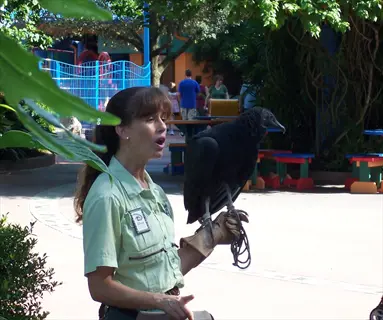
Target Training
- Foundation: Teach touching a stick before flight recall
- Distance: Start at 12in (30cm), increase to 15ft (4.5m)
- Rewards: Use high-value treats like pine nuts or millet
- Frequency: Practice 5-10 repetitions daily for consistency
- Environment: Begin in small rooms before larger spaces
- Cues: Use distinct whistle patterns for recall commands
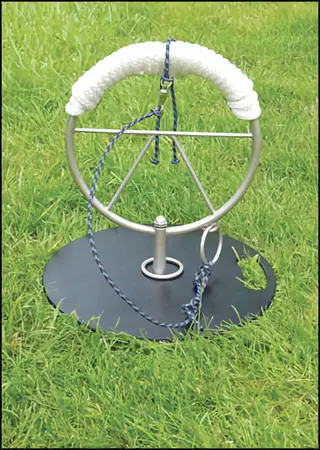
Perch Rotation
- Setup: Position identical perches 3ft (90cm) apart
- Technique: Reward movement between perches on command
- Progression: Increase distance by 6in (15cm) weekly
- Distractions: Add toys nearby to simulate real conditions
- Duration: Keep sessions under 10 minutes to prevent fatigue
- Motivation: Vary treat types to maintain engagement
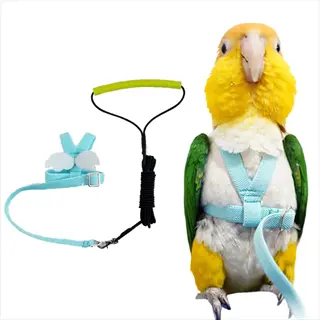
Harness Acclimation
- Introduction: Show harness daily without wearing first
- Desensitization: Touch bird with harness material briefly
- Fitting: Start with neck portion only for 30 seconds
- Duration: Gradually increase to 20-minute outdoor sessions
- Safety: Use quick-release buckles in emergency situations
- Sizing: Measure chest circumference with soft tape measure

Flight Path Management
- Route Planning: Create clear flyways between perches
- Landing Zones: Use textured perches for better grip
- Obstacle Course: Add safe obstacles to navigate around
- Height Variation: Install perches at different elevations
- Recall Points: Designate specific recall stations in rooms
- Supervision: Always monitor initial free-flight sessions
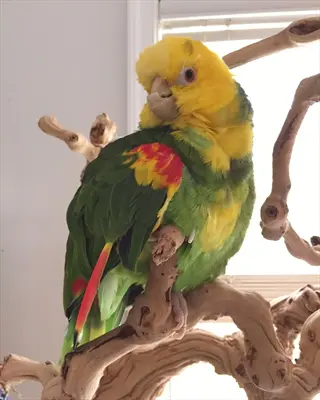
Station Training
- Foundation: Teach bird to remain on specific perches
- Duration: Start with 10-second stays, build to 5 minutes
- Distances: Increase recall distance gradually from 3-20ft
- Rewards: Use clicker markers for precise behavior timing
- Proofing: Practice with increasing household activity levels
- Applications: Useful for containing birds during mealtimes
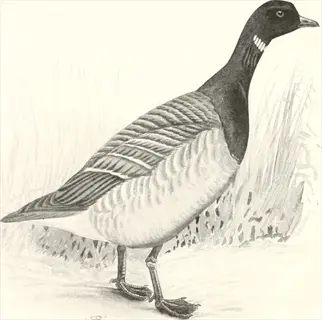
Flight Recall Games
- Fetch Variation: Train retrieving lightweight objects mid-flight
- Obstacle Navigation: Set up hoops or tunnels for direction changes
- Partner Work: Have family members call from different locations
- Height Challenges: Practice recalls from various elevation levels
- Speed Control: Reward smooth landings more than fast arrivals
- Consistency: Conduct sessions at same time daily for best results

Outdoor Harness Conditioning
- Indoor Prep: Fully acclimate to harness before going outside
- First Trips: Begin in quiet enclosed spaces like backyards
- Duration: Limit initial sessions to 5-10 minutes maximum
- Distractions: Gradually expose to cars, people and other animals
- Emergency Drills: Practice scooping bird quickly if startled
- Weather Limits: Avoid windy days exceeding 5mph (8km/h)
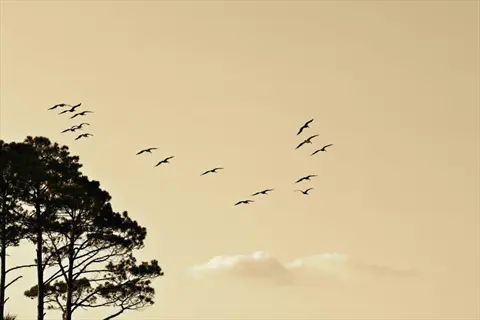
Flighted Socialization
- Group Dynamics: Train recall with other flighted birds present
- Turn-taking: Use distinct recall cues for different individuals
- Spatial Awareness: Teach maintaining safe flight distances
- Mixed Species: Only with compatible temperaments and sizes
- Supervision: Require constant monitoring during interactions
- Reward Sharing: Ensure all participants receive reinforcement
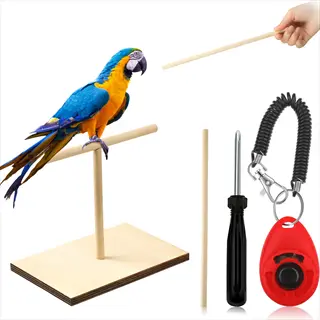
Height Adaptation Drills
- Elevation Control: Teach controlled descent from heights
- Step-downs: Practice intermediate landings during descent
- Ceiling Avoidance: Train staying below 8ft (2.4m) indoors
- Reward Structure: Higher value treats for precise low landings
- Safety Nets: Install temporary netting during initial training
- Progression: Increase starting height by 6in (15cm) weekly

Emergency Recall Conditioning
- Distinct Cue: Use unique sound like whistle blast or bell
- High-Value Rewards: Reserve special treats exclusively for drills
- Frequency: Conduct surprise drills 2-3 times weekly
- Scenarios: Practice during cooking, cleaning and door openings
- Distance: Start at 3ft (90cm), progress to whole-house recalls
- Reinforcement: Always reward even if response is delayed
Pros and Cons of Wing Clipping
Escape prevention is offered by wing clipping because it reduces the ability to fly. This also helps to keep birds from being in the way of windows and doors. It also eliminates the danger existing outside from the birds being able to get out. It has physical dangers caused by falling off perches. In such cases of wings being clipped, there are more injuries to the joints.
The size of the birds can significantly affect the level of risk involved. Small birds that are given an adverse clip to their wings are more vulnerable to the dangers posed by predators. Larger parrots incur greater injury from falling due to their increased weight. I have known cockatoos to fracture their keel bones during falls. Always keep in mind the size of your bird and its several features before clipping.
Outdoor security is a false sense of security with clipped birds due to the distance the wind can carry them, unusually far. Feathers grow back unnoticed, restoring flight. Never assume clipped birds can't escape. Always supervise outdoor time, even with a clipped wing.
Observe for stress signals, such as feather plucking, screaming, etc., which indicate psychological trauma when the bird's escape is prevented. Injuries due to improper feather clipping may also occur. Safety considerations must be balanced with your bird's psychological well-being; therefore, decisions should be made in accordance with the bird's individual needs.
Escape Prevention
- Reduces flight capability through open doors and windows
- Lowers escape risk in homes with frequent outdoor access
- Prevents loss during household activities like moving furniture
- Minimizes exposure to outdoor predators and harsh weather
Indoor Safety
- Decreases collisions with ceiling fans and large windows
- Reduces access to hazardous areas like kitchens and bathrooms
- Prevents burns from hot surfaces or open cooking containers
- Limits accidental drowning in toilets or uncovered water containers
Training Facilitation
- Encourages step-up commands during hand-taming sessions
- Increases owner interaction through ground-based activities
- Reduces aggressive territorial flights toward people
- Simplifies recall training in controlled indoor environments
Hazard Control
- Limits access to electrical cords and toxic houseplants
- Prevents chewing on lead-based paints or wooden moldings
- Reduces exposure to aerosol sprays and non-stick cookware fumes
- Blocks entry to unsafe spaces behind appliances or furniture
Owner Peace of Mind
- Reduces owner anxiety about accidental escapes during daily activities
- Minimizes supervision demands during free-roaming indoor sessions
- Allows safer interaction with children and other household pets
- Enables more relaxed home environment with open-window ventilation
Health Impacts
- Restricts flight exercise increasing obesity risks
- Promotes muscle atrophy in pectoral and wing muscles
- Reduces cardiovascular conditioning from sustained flights
- Impairs natural foraging behaviors and mental stimulation
Psychological Stress
- Causes chronic anxiety from denied escape instincts
- Increases feather plucking and self-destructive behaviors
- Elevates territorial aggression due to reduced confidence
- Triggers excessive screaming for attention and mobility
Injury Risks
- Falls from heights causing fractures or internal injuries
- Broken blood feathers during molting cycles
- Crash landings into hard surfaces from impaired gliding
- Increased vulnerability to household pets or children
False Security
- Outdoor wind currents enabling clipped birds to escape
- Delayed feather regrowth creating unexpected flight capability
- Owner complacency leading to unsupervised outdoor access
- Inadequate braking ability causing high-speed collisions
Feather Quality Issues
- Repeated clipping damages feather follicles affecting regrowth patterns
- Increases likelihood of deformed or weak feathers during molting cycles
- Causes chronic irritation leading to feather chewing behaviors
- May result in permanent feather loss if follicles are severely damaged
How to Clip Wings Safely
For balance in the air, try symmetrical clipping. Trim the same number of identical primary feathers on each side of the plane. Trim midway on the feather, avoiding the sensitive base. Never trim several outermost feathers greater than 5 to 7. Asymmetrical clipping results in dangerous tumbling and crash landings.
Blood feathers are recognizable because of their dark, waxy shafts. They contain an active blood supply and, if clipped, will bleed. Apply direct pressure and styptic powder immediately. If bleeding does continue, an avian veterinarian should be contacted for urgent care within minutes.
Professional clipping significantly lowers risks. The veterinarian identifies blood feathers that you may not see. They can teach the right way to restrain the bird to prevent injury. I recommend scheduling your first clips at the clinic. The pet owner needs to be trained on maintenance between molts and equipped with emergency supplies.
Do not clip wings during a molting phase when blood feathers are present; you will want to assess every feather in good light. Be sure to keep track of the dates to note their regrowth. Clipping a wing incorrectly can do far more damage than flight ever would.
Preparation
- Gather supplies: sharp scissors, styptic powder, towel, flashlight
- Work in quiet room with non-slip surface and adequate lighting
- Have assistant gently restrain bird using towel if needed
- Calm bird with soft speaking before beginning procedure
Wing Examination
- Extend wing fully to identify primary flight feathers
- Locate blood feathers (dark shafts) using bright light
- Count 5-6 outermost primaries for trimming targets
- Avoid secondary feathers near body and covert layers
Clipping Technique
- Cut feathers midway between base and tip (never near shaft)
- Maintain symmetry: trim identical feathers on both wings
- Clip at slight angle following natural feather curvature
- Leave outermost 1-2 feathers for cosmetic appearance
Post-Clipping Care
- Check for bleeding (apply styptic powder if needed)
- Observe bird for balanced gliding to floor surface
- Offer favorite treat as positive reinforcement
- Record clipping date to track molting schedule
Professional Assistance
- Schedule first clipping with avian veterinarian for proper technique
- Observe restraint methods that minimize bird stress
- Request demonstration of blood feather identification process
- Learn species-specific trimming patterns from experts
Identification
- Dark red/black shaft indicates active blood supply
- Waxy sheath covering indicates new growth stage
- Located primarily in primary feather positions 3-7
- More common during molting seasons (spring/fall)
Accidental Cutting
- Apply direct pressure for 2 minutes with gauze
- Use styptic powder or cornstarch to promote clotting
- Avoid pulling broken shaft to prevent further bleeding
- Monitor for signs of shock (panting, weakness)
Veterinary Intervention
- Required if bleeding persists after 5 minutes
- Necessary for broken shafts requiring removal
- Critical for birds losing over 1% body weight in blood
- Follow-up needed for infection prevention
Preventive Measures
- Avoid clipping during peak molting seasons
- Use bright light to examine feathers before cutting
- Never trim feathers showing dark shafts
- Track molting cycles to predict blood feather growth
Aftercare Protocol
- Monitor for 24 hours after bleeding incident
- Provide electrolyte supplements if blood loss occurs
- Limit physical activity for 48 hours
- Schedule veterinary follow-up for severe cases
Long-Term Health and Species Care
Species care calls for different methods of exercise. Small birds such as finches must have daily wing flapping recesses provided. Medium parrots need climbing mechanics. Large macaws receive benefits from weighted stick training. These adjustments help to prevent muscle loss in clipped birds. Activities must be formulated for the size and energy of the bird.
Modify your bird nutrition during the bird's onset of feather regrowth. Increase the protein to 18-20% during the moulting stages. Calcium supplements are also helpful for good feather formation. Birds that are not clipped are also in need of more calories than their clipped companions. I always recommend Kale and fresh carrots.
Pay close attention to health during molting periods. Watch for symmetrical feather growth every week. Note any bald spots or broken blood feathers. Weigh your bird every week to catch weight loss. Stress plucking usually peaks during these sensitive cycles.
Waterfowl and large birds require special attention. Ducks require access to swimming, although their wings are trimmed. Large parrots need padded surfaces to avert injuries due to falls. Consider their species-specific problems in all cases. The regime of care afforded must vary as their needs vary.
Small Birds (Budgies/Finches)
- Flight exercise: Essential daily wing-flapping sessions
- Diet adjustment: Increase protein during rapid molting cycles
- Perch setup: Multiple low perches with 6in (15cm) spacing
- Mental enrichment: Foraging toys changed weekly
Medium Birds (Cockatiels/Conures)
- Flight compensation: 30-minute climbing structures daily
- Nutrition: Calcium supplements during feather regrowth
- Perch variety: Different diameters for foot health
- Social needs: Minimum 2 hours human interaction daily
Large Parrots (Macaws/Cockatoos)
- Muscle maintenance: Resistance training with weighted perches
- Diet: High vitamin A foods for feather quality
- Environmental: Large play gyms with varied textures
- Behavioral: Puzzle feeders preventing boredom
Waterfowl (Ducks/Geese)
- Swimming access: Essential for clipped aquatic species
- Preen gland care: Monitor oil production monthly
- Diet: Higher niacin requirements than parrots
- Foot protection: Soft surfaces for heavy-bodied birds
Birds of Prey (Falcons/Hawks)
- Exercise: Controlled creance flying for muscle tone
- Nutrition: Whole prey diet with feathers/fur
- Perching: Broad platforms reducing pressure points
- Veterinary: Specialized raptor vet checks quarterly
Nutrition Planning
- Increase protein to 18-20% during molting cycles
- Supplement with omega-3 for feather quality
- Adjust pellet/seed ratio based on activity levels
- Provide calcium-rich foods like kale and broccoli
Exercise Routines
- Daily wing-flapping: 5 sets of 10 flaps minimum
- Climbing structures: Vertical distance equal to wingspan
- Foraging activities: Hide food in multiple locations
- Flight recall: Practice even with clipped birds
Environmental Adjustments
- Perch variety: Different materials and diameters
- Humidity control: Maintain 40-60% for feather health
- UV lighting: 12 hours daily for vitamin D synthesis
- Safe spaces: Multiple retreat areas in living space
Behavioral Monitoring
- Document feather-destructive behaviors daily
- Track vocalization changes signaling distress
- Note interaction willingness with family members
- Record food consumption patterns weekly
Preventive Care
- Annual blood panels for baseline health data
- Fecal exams every 6 months for parasites
- Beak/nail trims based on wear not calendar
- Emergency kit: Styptic powder, vet contacts, carrier
5 Common Myths
Clipping wings is a permanent solution that stops all flight capability in birds forever.
Wing clipping is temporary because, in the typical molting cycles, feathers fully reconstitute, within a range of time, depending on size of species, of about 1-12 months. Clipped birds have gliding ability, and can be untaught if they are not clipped regularly. Also, it seems that turkeys and pigeons, when shoved by a sudden gust of wind, can escape.
Birds do not experience pain from wing clipping as feathers are like hair or nails in humans.
However, the feathers have nerve endings at their base and if incorrectly handled trimming is potentially painful. More importantly, clipping results in psychological stress by curtailment of normal behavior, resulting in chronic stress, feather plucking, and increased vocalization being the birds expression of discomfort and frustration.
Only pets that are untame or aggressive require their wings clipped for safety and training.
The need for clipping is a result of environmental safety not temperamental problems. Even perfectly tame birds have dangers to meet, such as ceiling fans, hot stoves or open windows. Many well-socialized birds are injured in homes not bird-proof, whether they are well trained or docile.
DIY wing clipping is safe for beginners not qualified or experienced enough to have trained professional assistance.
Clipping for the inexperienced can cause horrific injuries from cutting blood feathers, resulting in life-threatening bleeding. Improperly using technique causes flight imbalance, which increases the risk of crash landing. Avian veterinarians state that most wing injuries originate in the clips done at the hands of owners who do them without the necessary training in anatomy and restraint methods.
Birds with clipped wings are naturally more inactive because they cannot fly, and so there is no need for exercise, for they conserve energy better.
Birds whose wings are clipped need more exercise compensation through climbing and wing-flapping if they are to avoid muscular atrophy and excessive fat accumulation. Restricted flight increases their inactivity, and they will require daily structured movement exercise to maintain cardiovascular function and provent joint trouble from inactivity.
Conclusion
Clipping a bird's wings is a safety issue that requires careful consideration. DO NOT rush into this decision until you fully understand the results. Take into consideration your home situation, environment, and the species of your bird. It is essential to make an informed decision that prioritizes your birds' well-being over convenience. If only there were one right answer for everyone.
Before clipping, always consult with an avian veterinarian. They can identify blood feathers and show you the proper technique. Guidance from a professional will avoid problems and tragedies. I have seen too many emergencies arise because of doing it yourself. Your veterinarian is aware of the species' vulnerabilities that you may not be aware of.
First, prioritize safety alternatives like bird-proofing your environment. Install window screens, remove hazards. Train recall commands to improve control. They offer protection with fewer restrictions on natural behavior. They work better for long-term bird welfare than clipping.
What matters most is your bird's quality of life. Please choose the option that retains their physical and mental health. Whether you clip their wings or not, they are dependent upon your consideration. Make a choice today that you can support years from now.
External Sources
Frequently Asked Questions
Is wing clipping painful for birds?
Wing clipping can cause both physical discomfort and psychological stress. Feathers contain nerve endings at their bases, making improper trimming potentially painful. More significantly, restricting flight causes chronic stress that may lead to feather destruction and behavioral issues.
How often should wings be clipped?
Clipping frequency depends on species size and molting cycles. Smaller birds like budgies need trimming every 6 weeks, while large parrots may only require it every 6 months. Always monitor feather regrowth between sessions and consult an avian vet for species-specific guidance.
Can clipped wings fully regrow?
Yes, feathers completely regenerate during natural molting cycles. Regrowth time varies significantly: small birds may replace feathers in 4-6 weeks, while large parrots can take 9-12 months. Never clip during active molting due to blood feather vulnerability.
Are there ethical alternatives to wing clipping?
Bird-proofing your home is the most ethical alternative. Effective strategies include:
- Installing window screens and door airlocks
- Creating designated safe flight zones
- Using avian-specific flight harnesses
- Implementing recall training protocols
- Removing ceiling fan hazards
What are the health risks of wing clipping?
Clipping poses several health risks including:
- Muscle atrophy from reduced flight exercise
- Increased obesity and joint problems
- Psychological stress leading to feather plucking
- Crash injuries from impaired gliding ability
- Blood feather accidents during molting cycles
Can all bird species be safely clipped?
Not all species tolerate clipping well. Waterfowl and birds of prey experience particular distress. Even among parrots, smaller birds adapt better than large species like macaws. Always prioritize environmental adaptations over clipping, especially for heavy-bodied birds prone to fall injuries.
What's the proper wing clipping technique?
Proper technique requires:
- Trimming only primary flight feathers
- Maintaining symmetrical cuts on both wings
- Avoiding blood feathers with visible shafts
- Cutting midway along the feather length
- Having styptic powder ready for emergencies
- Consulting an avian vet for first-time clips
Do clipped birds need special care?
Clipped birds require compensatory care including:
- Increased climbing structures for exercise
- Adjusted diets with higher protein during molting
- Calcium supplements for feather regrowth
- Regular weight monitoring
- More human interaction to prevent boredom
Can wing clipping prevent escapes?
Clipping reduces but doesn't eliminate escape risk. Wind currents can carry clipped birds surprisingly far, and regrown feathers restore flight unexpectedly. Bird-proofing combined with recall training provides more reliable escape prevention than clipping alone.
Should I clip wings myself or seek help?
Always consult an avian veterinarian for initial clipping. Professionals identify blood feathers and teach proper restraint techniques. After training, owners can maintain clips between molts, but emergency supplies like styptic powder must be readily available for accidents.

